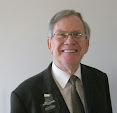Some Family History Research Essentials
To identify someone, I look for these points:
1. Does the name match the person I am looking for?
2. Does the date fit this person?
3. Did this person live in the same specific location?
4. Do the family relationships fit?
1. Names can be tricky. Don't obsess over the spelling.
When you get back to the mid 1800s, many of the people were illiterate, in other words they did not know how to spell their names. They often signed documents including marriage documents with an X. Next to the X, the clerk may have written "John Fletcher - his mark" (or something similar).
Even in later generations, the spelling of names on documents often depends on the clerk.
Patronymics - In some cultures, the family name will change in each generation. Children are given the father's given name plus a gender marker. Hans Andersen might be the brother of Marit Andersdottir.
Elsewhere, Katerina Gorska may be the sister of Dmetro Gorski (or Gorsky), and so forth.
Try to be aware of surname variations for the area you are researching.
Translations - Immigrants occasionally translated their foreign name into the language of their new country, Sometimes these are similar. Goldschmidt might be recognized as Goldsmith, but Orfèvre?
When I was
researching a German community in Ukraine, the parish register
suggested ignoring the vowels in the surnames because of alternative
spellings of similar vowel sounds.
Sites like Ancestry,
FamilySearch and MyHeritage often do an amazing job of finding
alternative spellings.
2. A first marriage commonly involved a man aged about 25 and a woman about 20. Children were born about every 2 years. Note that ages on censuses should usually be treated as approximations.
3. Prior to the
construction of railroads, people seldom travelled further than 6
miles for everyday activities. This is especially true of ordinary
people who did not own horses or carriages.
So if a family is
shown with children born at a greater distance than that, some of the
children may be from a different family with the same name.
Online
maps such as Google Maps
provide an easy way to see how close two places are.
Remember
that children were usually born at home on the farm and not in a
hospital in a nearby town. So if the birthplace differs on two
documents it may mean that the child was born on a farm situated
between two nearby towns.
4. Children will
usually be 20 - 40 years younger than their mother, Children were
always born someplace where their mother was, If the mother never
left England, all of her children were born in England.
A
census record is wonderful help in sorting-out family relationships,
but may not distinguish between biological, step, and adopted
children (if this is important to you). The term "in-law"
may be used for step and adopted children.
Legal adoptions are
a recent thing. (Prior to 1900 adoptions were usually informal.)
I hope these points help you in your research.

0 Comments:
Post a Comment
<< Home